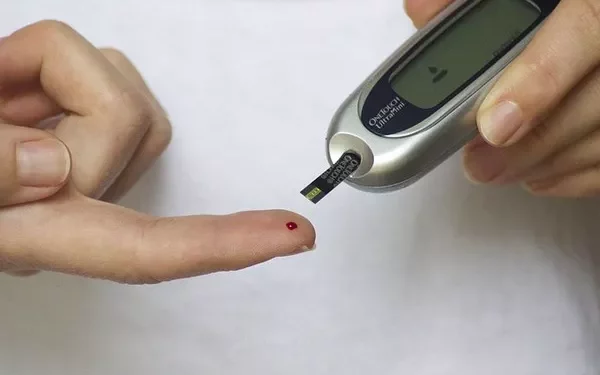Prediabetes is a serious health condition that occurs when blood glucose levels are higher than normal, but not high enough to be classified as diabetes. It is often considered a warning sign for type 2 diabetes, a condition that can lead to severe complications like heart disease, kidney failure, nerve damage, and blindness if left uncontrolled. However, the good news is that prediabetes is reversible with early detection and lifestyle changes. Understanding the glucose numbers that indicate prediabetes is crucial for preventing the progression to type 2 diabetes.
This article will provide a comprehensive overview of how blood glucose levels are measured, the specific glucose numbers that indicate prediabetes, and the key steps individuals can take to manage their blood sugar and reduce the risk of developing full-blown diabetes.
Understanding Blood Glucose and Its Measurement
Blood glucose, also referred to as blood sugar, is the amount of sugar present in the bloodstream. The body uses glucose as its primary source of energy, and it comes from the foods we eat, particularly carbohydrates. The pancreas, an organ located near the stomach, produces insulin, a hormone that helps the body process glucose and maintain healthy blood sugar levels.
There are several ways to measure blood glucose, each offering a different snapshot of how well the body is managing blood sugar. The most common tests for diagnosing prediabetes and diabetes include:
Fasting Plasma Glucose (FPG) Test
The FPG test measures blood glucose after an overnight fast (at least 8 hours without food or drink except water). This test is typically performed in a healthcare setting and is used to diagnose prediabetes, diabetes, and other glucose-related disorders.
Oral Glucose Tolerance Test (OGTT)
The OGTT involves drinking a sugary solution and having blood glucose levels measured at various intervals afterward. This test is often used to diagnose gestational diabetes and prediabetes.
Hemoglobin A1c Test
The A1c test measures the average blood glucose levels over the past 2 to 3 months. It gives an indication of how well blood glucose has been controlled over time and is used to diagnose diabetes and prediabetes.
Prediabetes: What Is It and Why Does It Matter?
Prediabetes is a condition in which blood sugar levels are elevated above normal but not yet high enough to meet the criteria for diabetes. If left untreated, prediabetes often progresses to type 2 diabetes, but many people with prediabetes can prevent this progression by making lifestyle changes, such as adopting a healthier diet, increasing physical activity, and losing excess weight.
Prediabetes is a critical health condition because it indicates that the body’s ability to regulate blood sugar is impaired. Individuals with prediabetes are at an increased risk of developing other chronic conditions, including cardiovascular disease, stroke, and certain types of cancer. In addition, prediabetes often has no obvious symptoms, which is why it is sometimes referred to as a “silent” condition. The only way to know if you have prediabetes is through regular blood glucose testing.
Blood Glucose Numbers: What Indicates Prediabetes?
When it comes to diagnosing prediabetes, healthcare professionals use specific blood glucose thresholds. These thresholds are based on the results of the tests mentioned earlier: fasting plasma glucose, oral glucose tolerance test, and hemoglobin A1c. Here is a breakdown of the glucose numbers that suggest prediabetes:
Fasting Plasma Glucose (FPG) Test:
The fasting plasma glucose test measures blood glucose after an overnight fast. The following categories are used to classify FPG results:
- Normal: A fasting blood glucose level of less than 100 mg/dL (5.6 mmol/L).
- Prediabetes: A fasting blood glucose level between 100 and 125 mg/dL (5.6 to 6.9 mmol/L).
- Diabetes: A fasting blood glucose level of 126 mg/dL (7.0 mmol/L) or higher on two separate tests.
If your FPG result falls between 100 and 125 mg/dL, you are considered to have prediabetes. However, a single test result is not enough for a diagnosis. Your healthcare provider will typically repeat the test or order additional tests to confirm the diagnosis.
Oral Glucose Tolerance Test (OGTT):
The oral glucose tolerance test is another common test used to diagnose prediabetes and diabetes. This test measures blood glucose before and after consuming a sugary drink. The following categories apply to OGTT results:
- Normal: A 2-hour blood glucose level of less than 140 mg/dL (7.8 mmol/L).
- Prediabetes: A 2-hour blood glucose level between 140 and 199 mg/dL (7.8 to 11.0 mmol/L).
- Diabetes: A 2-hour blood glucose level of 200 mg/dL (11.1 mmol/L) or higher.
If your 2-hour blood glucose level falls between 140 and 199 mg/dL, you are diagnosed with prediabetes. As with the FPG test, confirmation of the diagnosis may require a second test or an additional A1c measurement.
Hemoglobin A1c Test:
The hemoglobin A1c test measures the average blood glucose levels over the past 2 to 3 months. It is an important tool for monitoring long-term glucose control. The following A1c ranges are used to diagnose prediabetes and diabetes:
- Normal: An A1c level of less than 5.7%.
- Prediabetes: An A1c level between 5.7% and 6.4%.
- Diabetes: An A1c level of 6.5% or higher.
If your A1c is between 5.7% and 6.4%, you are considered to have prediabetes. This result is a strong indicator of an increased risk of developing type 2 diabetes, and it signals the need for lifestyle modifications to prevent progression to diabetes.
Risk Factors for Prediabetes
While blood glucose tests are essential for diagnosing prediabetes, certain risk factors increase the likelihood of developing the condition. These include:
Age: Being over the age of 45 increases the risk of prediabetes.
Family history: A family history of diabetes increases the likelihood of developing prediabetes.
Overweight or obesity: Carrying excess weight, especially around the abdomen, is a major risk factor.
Physical inactivity: A sedentary lifestyle contributes to insulin resistance and the development of prediabetes.
High blood pressure: Having high blood pressure can increase the risk of developing prediabetes.
High cholesterol or triglycerides: Abnormal lipid levels can signal insulin resistance and prediabetes.
Gestational diabetes: Women who had gestational diabetes during pregnancy are at higher risk of developing prediabetes later in life.
Polycystic ovary syndrome (PCOS): Women with PCOS are more likely to develop insulin resistance and prediabetes.
What Can You Do If You Have Prediabetes?
If you have been diagnosed with prediabetes, the good news is that lifestyle changes can significantly reduce your risk of progressing to type 2 diabetes. Some of the most effective strategies include:
1. Lose Weight
Even a modest weight loss of 5-10% of your body weight can significantly improve insulin sensitivity and help regulate blood glucose levels. For example, if you weigh 200 pounds, losing 10-20 pounds can make a meaningful difference in your health.
2. Increase Physical Activity
Regular physical activity, such as brisk walking, jogging, cycling, or swimming, can help improve insulin sensitivity and lower blood sugar levels. Aim for at least 150 minutes of moderate-intensity aerobic activity per week, which can be broken down into manageable sessions throughout the week.
3. Adopt a Healthy Diet
Focus on a balanced, whole-foods-based diet that includes plenty of vegetables, fruits, lean proteins, whole grains, and healthy fats. Limit refined carbohydrates, sugary beverages, and processed foods, as these can cause blood sugar spikes.
4. Monitor Your Blood Sugar Levels
If you have prediabetes, regular blood glucose monitoring can help track your progress and provide valuable feedback on how well your lifestyle changes are working.
5. Take Medications (If Necessary)
In some cases, your healthcare provider may recommend medications to help manage blood glucose levels. The most common medication prescribed for prediabetes is metformin, which helps improve insulin sensitivity.
Conclusion
Prediabetes is a serious condition that can lead to type 2 diabetes if left untreated. It is characterized by elevated blood glucose levels that fall between the normal and diabetic ranges. By understanding the specific glucose numbers that indicate prediabetes, individuals can take proactive steps to manage their health and prevent the onset of type 2 diabetes. Regular blood glucose testing, combined with lifestyle changes such as weight loss, increased physical activity, and a healthy diet, can significantly reduce the risk of developing diabetes and its associated complications. Early detection and intervention are key to reversing prediabetes and achieving long-term health and wellness.
Related topics:
How to Effectively Monitor Blood Sugar



























